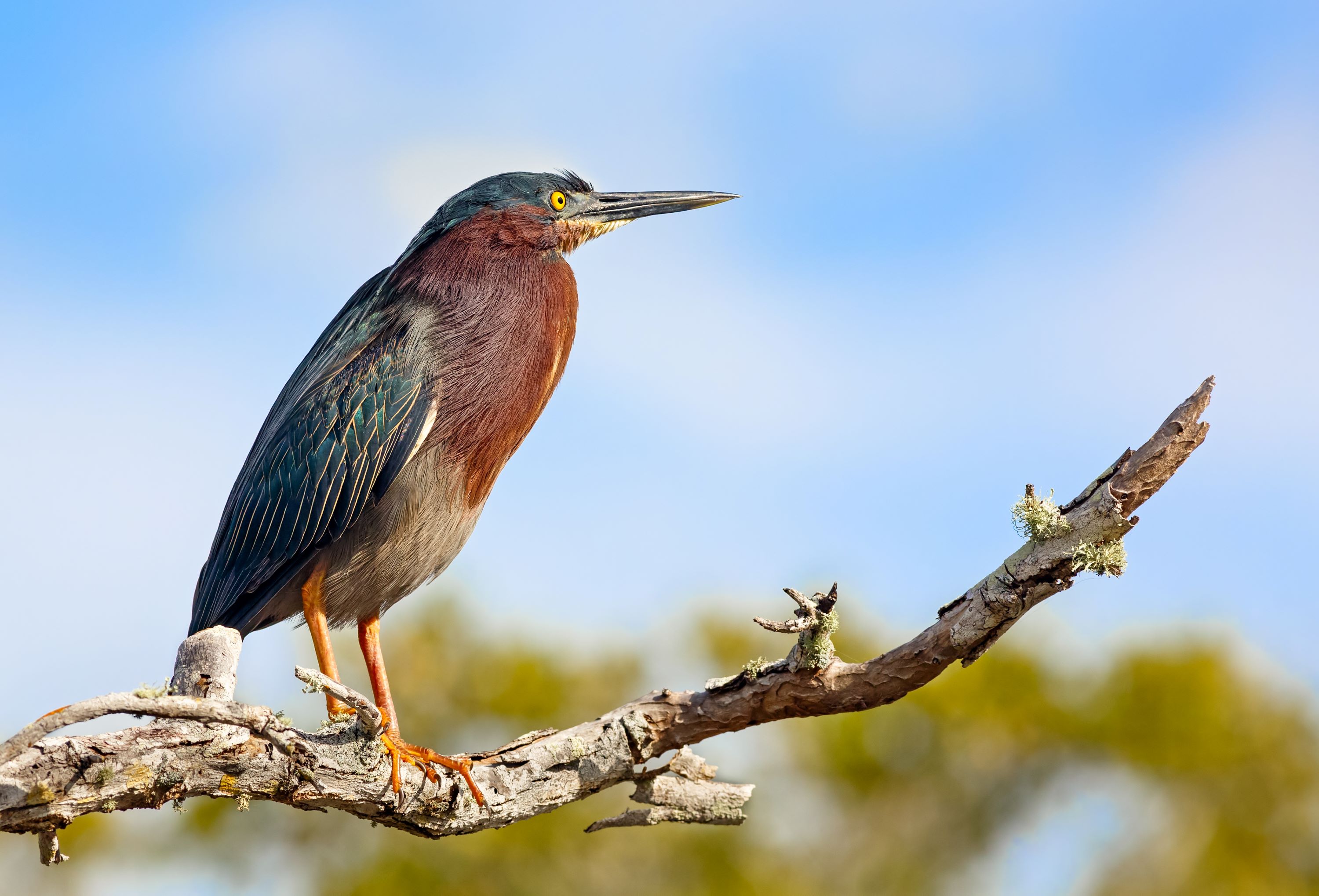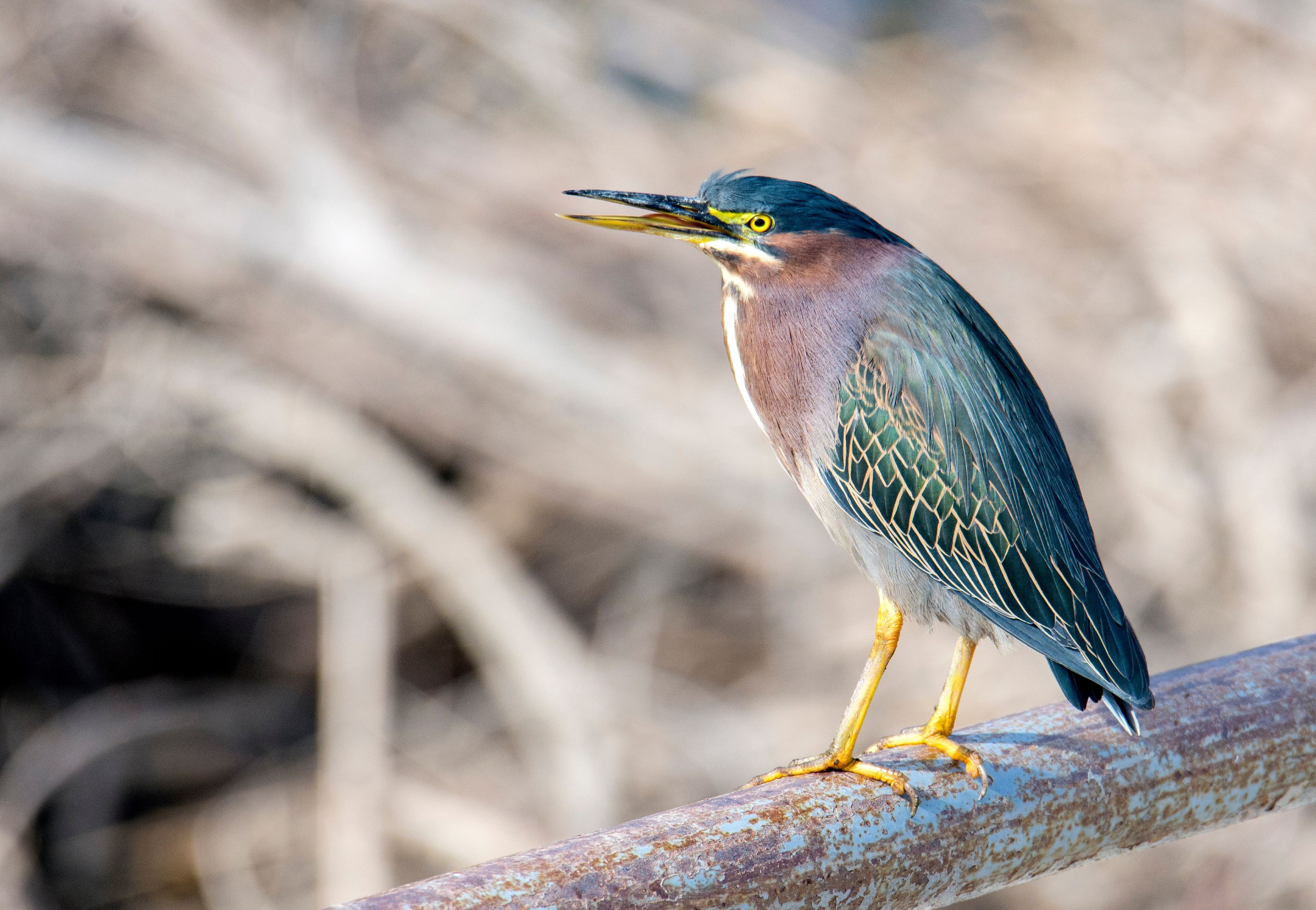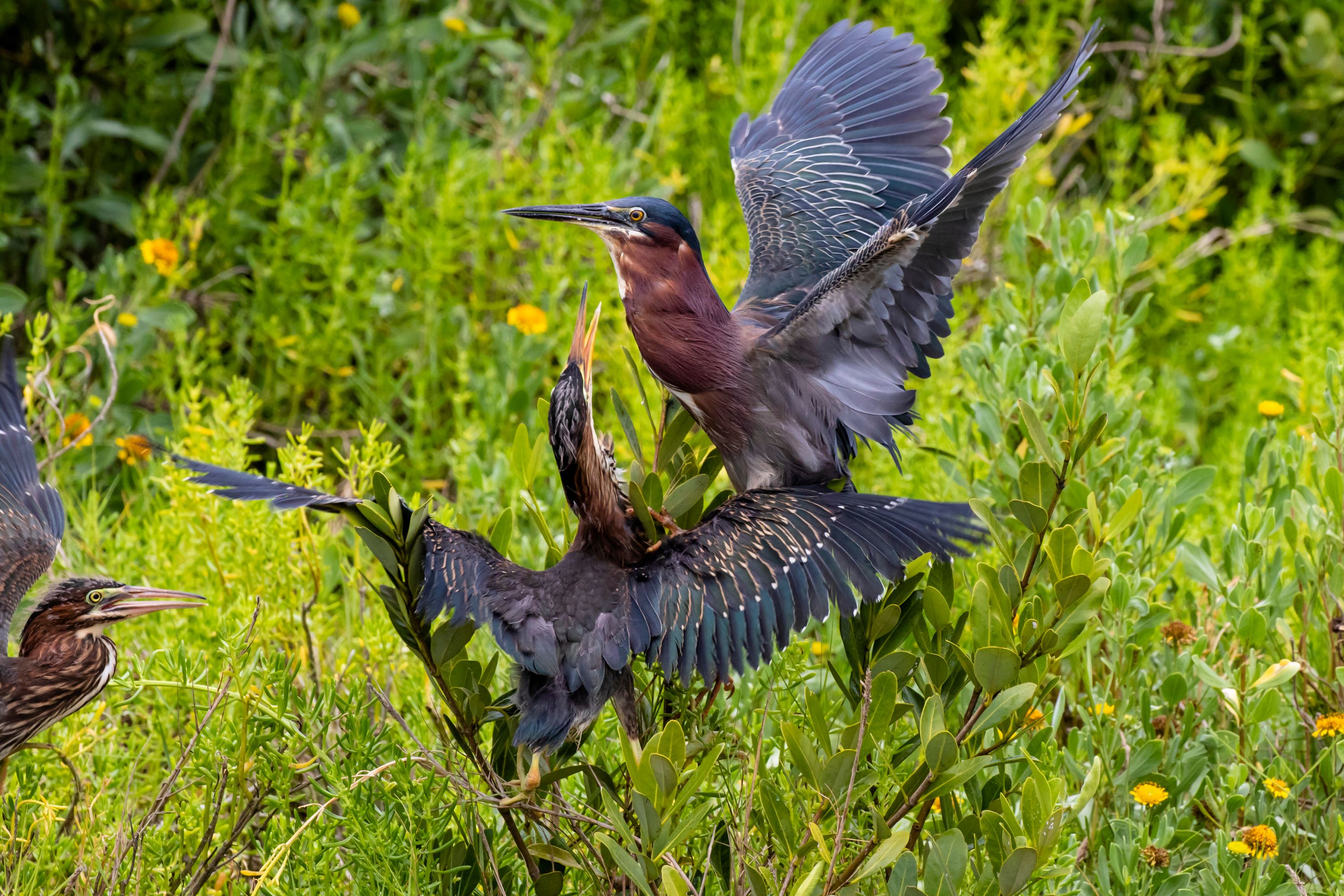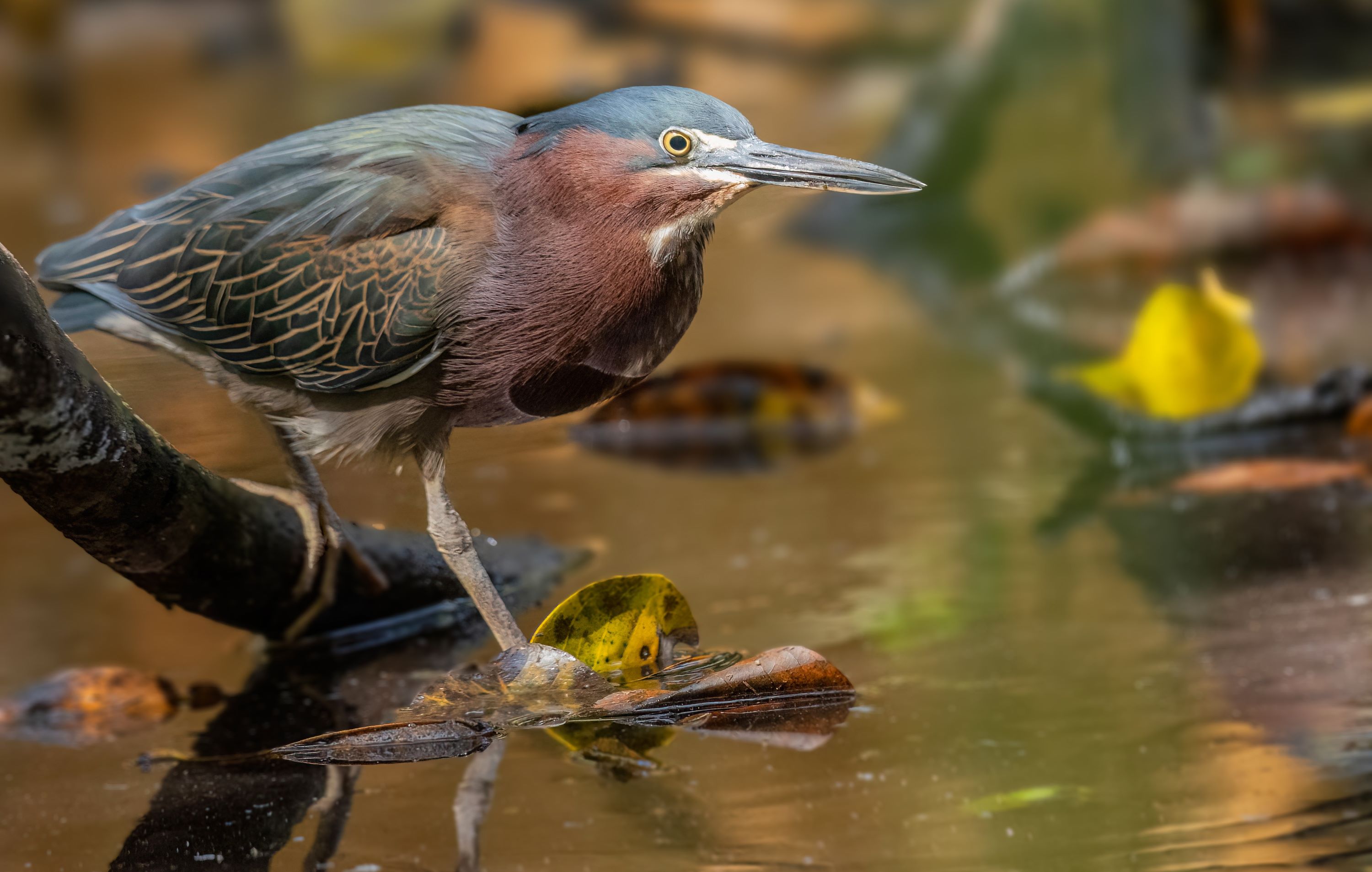
Green Heron: The Clever Fisher of the Water's Edge
Introduction to the Green Heron
The Green Heron, Butorides virescens, is a small, stocky wading bird known for its remarkable fishing intelligence. Found primarily in the Americas, this heron's subtle beauty and fascinating behaviors make it a delightful sight near water bodies.
Physical Description
The Green Heron is relatively small for a heron, measuring about 44 to 46 cm in length. It has a rich velvety greenish-black cap and back, with a chestnut-colored neck and a dark bill. The wings are relatively short and rounded. During the breeding season, adults develop long, wispy feathers on the neck.
Habitat and Distribution
These birds are common across much of North America, from southern Canada to northern South America. They inhabit a variety of freshwater and brackish environments, including marshes, rivers, lakes, and estuaries. The Green Heron prefers areas with dense vegetation near water, providing ample feeding and nesting opportunities.

Behavior and Lifestyle
Green Herons are solitary birds, particularly outside the breeding season. They are known for their incredible tool-using ability, often using bait such as insects or small objects to lure fish within striking distance. This behavior showcases a rare and high level of intelligence among birds.
Feeding Habits
Their primary diet consists of small fish, amphibians, and aquatic invertebrates. The Green Heron hunts by standing still at the water’s edge and quickly lunging to catch prey with its sharp bill.
Breeding and Nesting Habits
These herons breed in the spring and early summer. They are typically solitary nesters, but occasionally nest in small colonies. The nest is a platform of sticks, often built over water in trees or shrubs.

Egg Laying and Incubation
The female lays 2 to 4 pale green-blue eggs. Both parents share the responsibilities of incubating the eggs, which hatch after about 19 to 21 days.
Chick Rearing and Parental Care
The hatchlings are altricial and require considerable parental care. Both parents feed the chicks, regurgitating food into the nest. The young fledge at about 16 to 17 days old but usually stay near the nest for continued care.
Vocalizations and Communication
Green Herons are not particularly vocal, but they do make a variety of sounds, especially when disturbed. Their calls include sharp, loud 'skeow' sounds, used for alarming and communicating, particularly in the breeding season.

Conservation Status
The Green Heron is listed as Least Concern by the IUCN. While they are widespread and adaptable, they face threats from habitat destruction, particularly in wetland areas.
Similar Species and Taxonomy
Belonging to the order Pelecaniformes, the Green Heron shares many characteristics with other herons and egrets in the Ardeidae family. It is most closely related to the Striated Heron, with which it shares similar hunting techniques and habitat preferences.
The Green Heron in Utah
The Green Heron can be found in Utah, especially in wetland areas across the state. They are typically seen along the edges of ponds, lakes, and rivers, often concealed among vegetation.
Conclusion
The Green Heron, Butorides virescens, is a remarkable bird, not just for its striking appearance but also for its intelligence and adaptability. Its presence in diverse aquatic environments across the Americas highlights the importance of preserving these habitats. Observing a Green Heron in the wild offers a glimpse into the complexity and elegance of avian life and the intricate ecosystems they inhabit.